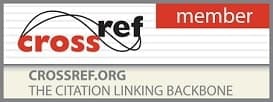- Printed Journal
- Indexed Journal
- Refereed Journal
- Peer Reviewed Journal
P-ISSN: 2394-1685 | E-ISSN: 2394-1693 | CODEN: IJPEJB
Impact Factor (RJIF): 5.38
2016, Vol. 3, Issue 2, Part G
Nutrition and sports
Author(s): Sravan Kumar Singh Yadav
Abstract:
Sports Nutrition is the study and practice of nutrition and diet as it relates to athletic performance. It is concerned with the type and quantity of fluid and food taken by an athlete, and deals with nutrients such as vitamins, minerals, supplements and organic substances such as carbohydrates, proteins and fats. Although an important part of many sports training regimens, it is most popular in strength sports (such as weight lifting and bodybuilding) and endurance sports (for example cycling, running, swimming, rowing). All athletes consider taking dietary supplements because they are looking for the “magic ingredient†to increase performance. In the extreme case of performance-enhancing supplements, athletes, particularly bodybuilders may choose to use illegal substances such as anabolic steroids, compounds which are related to the hormone testosterone, which can quickly build mass and strength, but have many adverse effects such as high blood pressure and negative gender specific effects. Blood doping, another illegal ergogenic, was discovered in the 1940s when it was used by World War II pilots. Dietary protein began to be consumed in the 1940s and muscle building results were found in resistance and strength training athletes Protein intake is a part of the nutrient requirements for the regular athlete and is an important component of exercise training, because it can also aid in performance and recovery. Dietary protein intake for well-trained athletes should occur before, during and after physical activity as it is advantageous in gaining muscle mass and strength However, if too much protein and amino acid supplements are consumed (especially by the average exerciser), it can be more harmful than beneficial; health risks include: “dehydration, gout, calcium loss, liver, and renal damage [and] gastrointestinal side effects include diarrhea, bloating, and water loss" (Lawerence). A bountiful protein diet must be paired with a healthy, well-rounded meal plan and regular resistance exercise. Yet, characteristics such as the type of exercise, intensity, duration, the carbohydrate values of diet, the individual's sex and age and also the amount of background training and training environment.
Pages: 350-354 | 1551 Views 182 Downloads
Download Full Article: Click Here
How to cite this article:
Sravan Kumar Singh Yadav. Nutrition and sports. Int J Phys Educ Sports Health 2016;3(2):350-354.








 Research Journals
Research Journals